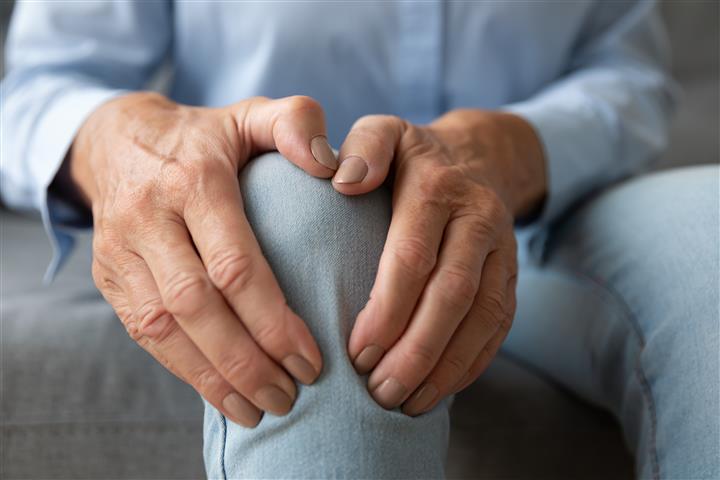The 5 Best Ways to Support Joint Health

Taking care of our joint health becomes more and more important as we age. Though they become more commonplace as we age, joint problems definitely aren’t something to ignore. When not managed consistently, they can affect mobility, overall health, and quality of life. Preventative measures like stretching, weight management, and a healthy lifestyle are most effective when started early and maintained on a regular basis. But positive changes can still make a difference anytime. If you experience joint pain, we recommend trying approaches such as Cary physical therapy as well as working with your doctor.
Hot and cold therapy
One way to reduce pain is heat therapy, which warms up the skin and muscles to promote blood flow, helping to speed up healing and increase elasticity. Treatments like warm showers and baths, hot tubs, electric blankets, and heating pads can help relieve stiffness, tightness, and discomfort. Talk with your doctor if you feel that you need heat treatments to help warm up the joints in the morning or before walking and other exercises.
Cold therapy (also called cryotherapy) can also calm down inflammation and swelling. Gel ice packs (or ice, or a bag of frozen vegetables) wrapped in a towel can be applied to painful joints for up to 20 minutes, several times a day.
Because cryotherapy reduces blood flow and nerve activity by slowing down the pain transmitters to the brain, it may reduce sensitivity to pain, so it’s best to talk to your doctor to make sure it won’t affect any other conditions you may have.
Warm-ups, cool-downs, and dynamic stretching
While there’s always that temptation to just skip them, warm-ups and cool-downs are an important part of injury-free exercise. They prevent the shock of going from rest to sudden, vigorous movements and vice versa, helping to keep muscles and joints healthy. The ‘warm-up’ activity is named so for a reason: it increases blood flow to prepare joints and muscles for repetitive or load-bearing movements. This may look like walking for five minutes, dynamic stretching, or doing five minutes on the stationery bike.
Dynamic stretching is a type of warm-up with specific movements and repetitions that target certain muscle groups and joints. More active than the longer holds of static stretching, dynamic stretches are done for only 10–20 seconds at a time. It’s kind of doing a ‘dress rehearsal’ of the movement patterns you’re about to do more of, like weight lifting or yoga poses. You can learn more about dynamic stretching here.
Cool-downs are also important to safely slow down blood flow and heart rate. This may look like taking a couple slow laps after your workout, or slowing down your pace at the end of a walk or swim. And including still, static stretching (30–60 seconds with no bounce) in your cool-downs can increase flexibility and prevent injuries by increasing range of motion.
Low-impact exercise
Exercise is an important part of managing joint pain by strengthening the supporting muscles and managing weight. In addition, it compresses the joints, sending nourishing joint fluid into the cartilage and helping to keep the joints flexible. And in 2005, studies showed that even for arthritic knees, low-impact exercise proved to be safe and effective in reducing pain and disability.
Depending on your weight, fitness level, and history of injuries or conditions, you may want to talk with your doctor about the best low-impact exercises for you. When in doubt, it’s best to keep it gentle. Popular activities include walking, swimming and other water exercises, Pilates, yoga, cycling, and rowing.
Maintaining a healthy lifestyle and weight
Diet and lifestyle can directly affect the increase or decrease of joint pain. Foods like sugar and sugary carbs, red meat, and highly processed foods—as well as alcohol and tobacco—can aggravate inflammation, and therefore pain, in the joints. But a mainly plant-based diet (or the Mediterranean Diet, which includes fish), that includes whole foods and some of these inflammation fighters, can help not only keep joints healthy, but the rest of you as well.
A healthy body weight is another component of joint pain management. Depending on your height and body type, your weight may subject your joints to pressure that’s either too high or too low for sustainable health. Too much weight puts more pressure on the lower body joints, especially the hips, knees, and feet, which can impact joint pain. Too low of a weight doesn’t provide enough muscular support to keep joints strong and stable. It may be good to talk with your doctor or a nutritionist to check that you’re at a weight that’s right for your joints.
Stress management
Stress management is an important component of good health, especially if we’re experiencing chronic or recurring stress. Continually elevated stress hormones can keep muscles tense and ready for action, which can amplify joint pain. As stress sets off the body’s inflammatory response, joint damage can be triggered and aggravated.
Unfortunately, conditions like arthritis that cause chronic pain, fatigue, and poor sleep can create a vicious cycle—contributing to the chronic stress that can then contribute to the pain, leading to anxiety and depression. This makes stress and joint pain management with the help of an orthopedics specialist that much more important. If you have been experiencing foot pain, you may need to see a foot specialist.
Regular and proven stress-management practices like meditation, exercise, deep breathing, acupuncture, and yoga can help to keep inflammation and pain at bay. The American College of Rheumatology/Arthritis Foundation also recommend tai chi and yoga for pain management, combining meditation, relaxation, and breathing techniques with low-impact exercise. It can also be valuable to take stock of stressful factors in your life and minimize where you can.
Related Posts

Podcast: A Day in the Life at Era Living – Resident Diane Miller

Podcast: Advocating for Retirees in Senior Living

